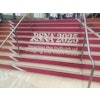Dear AuntMinnie.com Member,
The use of CT in pediatric radiology has grown sharply in recent years thanks to the modality’s speed and diagnostic power. But this increase is prompting concern among many pediatric radiologists, who are worried about the radiation dose being delivered to radiology’s smallest patients.
In a presentation at this week’s Society for Pediatric Radiology meeting in San Francisco, Dr. Lane Donnelly from the University of Cincinnati discussed the growth of pediatric CT imaging and what radiology professionals can do to minimize dose. Staff editor Eric Barnes was there to report for our CT Digital Community.
The use of CT has expanded beyond traditional applications like automobile injuries and malignancies and into new areas such as abdominal pain, Donnelly said. CT is often used because it can render a diagnosis faster than non-imaging methods that rely on an extended observation period. Concerns about malpractice are also driving healthcare providers to order CT scans to rule out trauma before sending patients home.
But recent studies indicate that radiation exposure early in life can lead to a statistically significant increased risk of developing malignancies later on. While the exact threshold of risk is still in question, the risk of cancer seems to be present at lower doses than previously thought, Donnelly said.
What can pediatric radiologists do about it? Donnelly provides a number of techniques for reducing dose, such as adjusting scanning parameters and using shielding products, and software techniques currently under development will help as well. Find out how you can reduce pediatric radiation dose at your facility by going to our CT Digital Community, at ct.auntminnie.com.


















